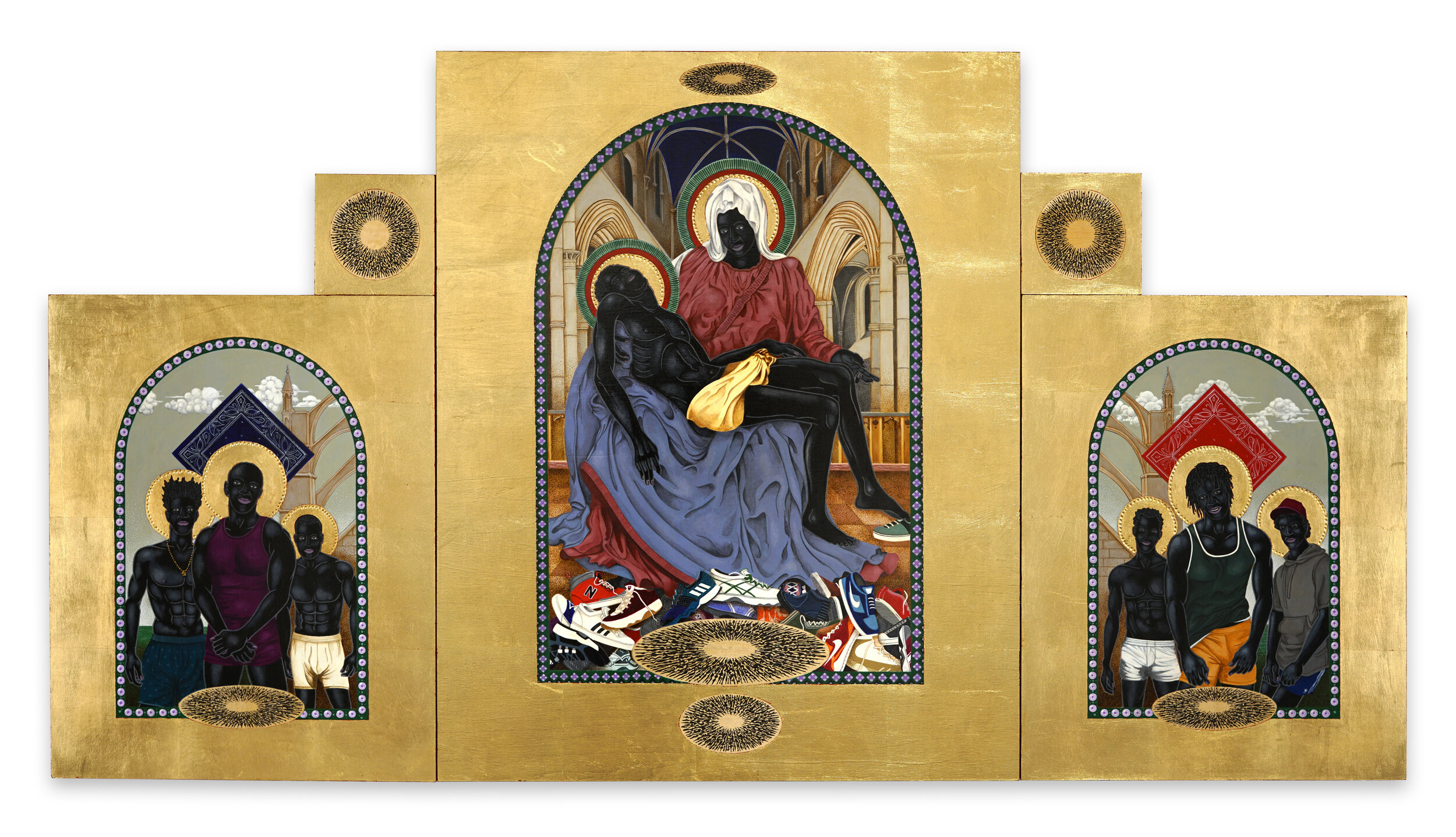Greenfield's versions are rendered in the Byzantine style of their art historical predecessors, with the black Virgin Mother and Baby Jesus as the central focus within circular compositions, or tondos. These tondos float amongst abstract discs, set within fields of lustrous, gold leaf. The Madonnas predominate before a variety of backgrounds, which were traditionally innocuous. Greenfield, however, presents these backdrops as various revenge fantasies, where white supremacists are cast in the role of victims, suffering the fates they often inflicted.
The effect is striking, the meaning unexpected. For Greenfield, a dedicated meditator, the discs symbolize the mantras one repeats during meditation, and often appear in his work. The Black Madonnas, seated innocently before the violence playing out behind, are the thoughts which come unbidden during meditation between mantras - to be acknowledged, then released. The Madonnas play their traditional role, conveying notions of maternal love, seemingly oblivious to these various scenes of retribution, where the rope is decidedly on the other neck. Yet these role reversals are less about revenge fantasies and more about creating contexts for shifts in perspective - for empathy. Tinged with humor, titles like, Mississippi Cookout, and Burnin’ Down the House, invite us to imagine an alternate reality, so that we might better understand the brutal realities of the past as we navigate our way forward. As Greenfield states, “Fear of the “other” often devolves into mindless hatred. Yet, sometimes the path to empathy lies in the visualization of one’s physical victimization—particularly when paired with a symbol that has come to be associated with universal love.” He adds, “The revenge fantasy exists in the darker regions of the subconscious in response to centuries of injustice. It is subdued by the higher aspiration that leads toward a more saintly life. As during the Renaissance, when Black Madonnas first gained prominence, they serve as metaphors for a spectrum of new beginnings.”
Throughout his career, Greenfield's work has dealt with elucidating the African American experience - examining stereotypes and other acts of oppression, often by illuminating the most oppressive of acts - those of omission. Pieces like Escrava Anastacia , and Zong , are among a number of new works in the exhibition that present us with powerful images of figures and events neglected by history. Greenfield's images of a muzzled Anastacia, a legendary South American slave, known for her exceptional beauty and miraculous powers of healing, and the ill-fated souls cast to oblivion from the slave ship Zong, compel us to learn their stories.
This exhibition was a year and a half in the planning, yet feels uncannily destined for this moment. It opens at a time of unprecedented upheaval, where a global pandemic and outrage over continuing racial inequality, have challenged our institutions, and our perceptions of them, to the core. With Black Madonna , Mark Steven Greenfield brings an important and timely perspective to the discussion.
We look forward to welcoming you to view the exhibition virtually and by appointment, abiding by all of the CDC-recommended precautions.
VIEW THE PRESS RELEASE & SCHEDULING PAGE FOR BLACK MADONNA



